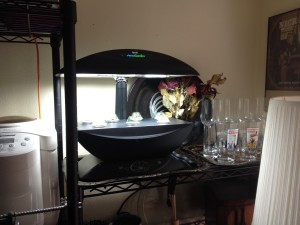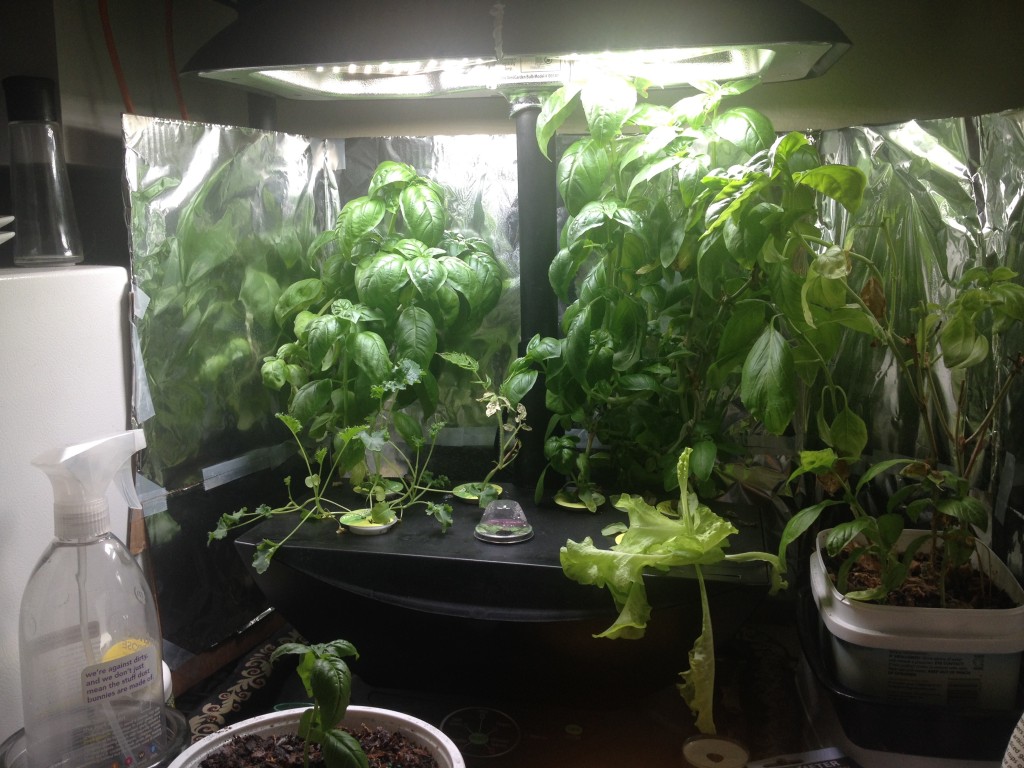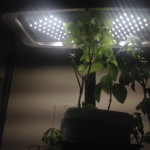Approximately one year ago I switched my Aerogarden from the stock fluorescent bulbs to using LEDs and to using a three part nutrient regimen.
LED Bulb Update
The stock bulbs had to be replaced every 3-6 months for one of two reasons. One, the stock bulbs will dim with age, the Aerogarden flashes a reminder to replace the bulbs when it thinks they’re getting old. Two, the stock bulbs burn out within 3-6 months, thus I always kept extra bulbs on hand. The LEDs show no signs of dimming and none have burned out, making them a very worth while investment.
The only fear I had switching to LEDs was that they didn’t put out as much light, or that the light beam wasn’t as wide. I grow potted plants around the Aerogarden, utilizing the light spillage for less light hungry plants. To make up for the loss I added two full spectrum light strips to my grow shelf. In addition to the basil, I regrow kitchen scraps. Right now that includes a small amount of ginger, lettuce, and green onions.
Three Part Nutrient Update
I love using the three part nutrients. Every two weeks I pull out the relatively large bottles, 1 quart each, and use roughly 1 teaspoon from each. These nutrients should last me years, especially stored correctly. Quart by quart, the three part nutrients cost half as much as the premix. Besides the cost saving I tweak ratios depending on if these are fresh seeds, established plants, or if it’s time to force them to flower. While I’m still learning how to grow salad greens and veggies in the Aerogarden, I have had much better success with the three part nutrient system. The basil has a habit of overrunning the Aerogarden if I don’t attend to it regularly, it will prevent the slower growing plants from being able to establish themselves.


